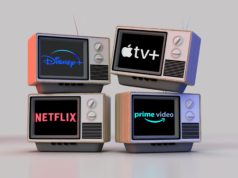 Gartner Inc. analysts have determined the top ten technologies and trends that will have a significant impact for most organizations in 2012. The three main criteria for inclusion are high potential for disruption, the need for major financial investment, and the risk inherent in not adopting quickly enough.
Gartner Inc. analysts have determined the top ten technologies and trends that will have a significant impact for most organizations in 2012. The three main criteria for inclusion are high potential for disruption, the need for major financial investment, and the risk inherent in not adopting quickly enough.
The list and supporting research will be presented at Gartner Symposium/ITxpo, which opens tomorrow in Orlando, Fla., and runs through Oct. 25.
“These top ten technologies will be strategic for most organizations, and IT leaders should use this list in their strategic planning process by reviewing the technologies and how they fit into their expected needs,” said David Cearley, vice president and Gartner fellow.
Media tablets are first on the list. Also near the top are mobile-centric applications and user interfaces, particularly as windows, icons, menus, and pointers will be replaced by touch, gesture, search, voice and video. Additionally, HTML5 will provide a long term model to address some of the existing cross-platform issues, and by 2015, mobile web technologies will have advanced so that half the applications that would be written as native apps. And context-aware computing, which uses information about an end-user or objects environment, activities, connections and preferences to improve the quality of interaction with that end-user or object, will appear in targeted areas such as location-based services, augmented reality on mobile devices, and mobile commerce.
Next on Gartner’s top ten is the Internet of Things, a broad concept describes how the Internet will expand as sensors and intelligence are added to physical items such as consumer devices or physical assets and these objects are connected to the Internet. Embedded sensors, image recognition and NFC (near field communication) payment systems all have a part to play here.
Application stores by Apple and Android are at fifth place. Gartner forecasts that by 2014, there will be more than 70 billion mobile application downloads from app stores every year, and this will grow from a consumer-only phenomena to an enterprise focus.
That’s followed by next-generation analytics, which increasingly will focus on decisions and collaboration to provide simulation, prediction, optimization and other analytics, not simply information, in order to empower more decision flexibility at the time and place of every business process action.
Four items on the list will have their most impact behind the scenes of what the average consumer or user will see. They are: big data, with new technologies emerging to cope with the sheer volume as well as the size, complexity of formats and speed of delivery; in-memory computing, including a huge increase in the uses of flash memory in consumer devices, entertainment equipment and other embedded systems; extreme low-energy servers; and cloud computing, particularly at the enterprise level.
“Organizations should start exploratory projects to look at promised candidate technology and kick off a search for combinations of information sources, including social sites and unstructured data that may be mined for insights,” said Carl Claunch, vice president and distinguished analyst at Gartner.
Related links:






